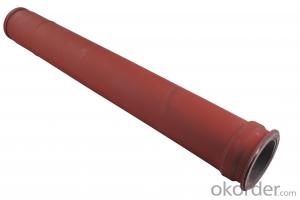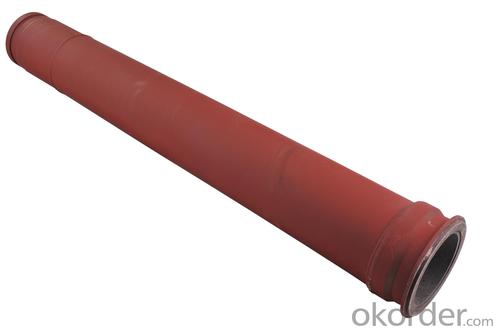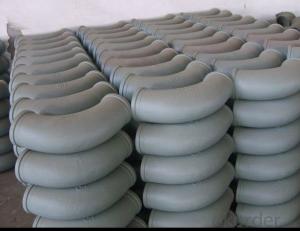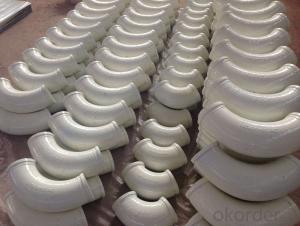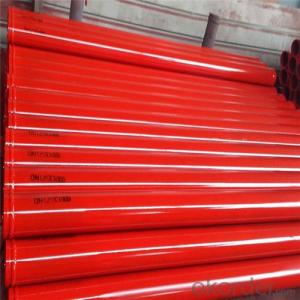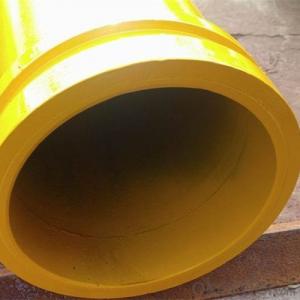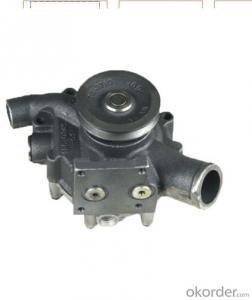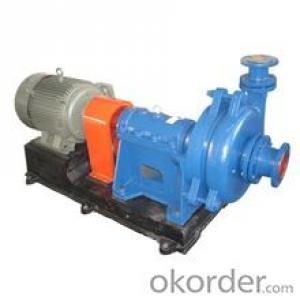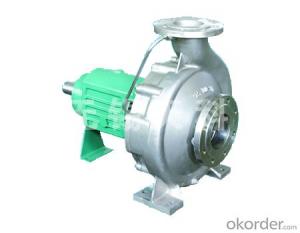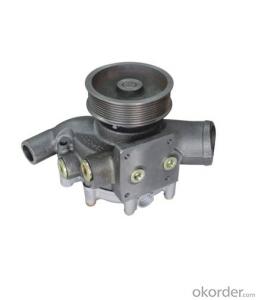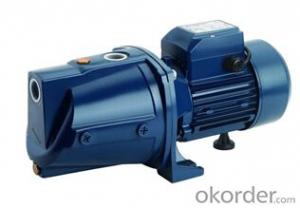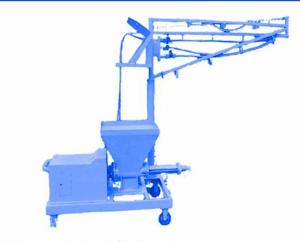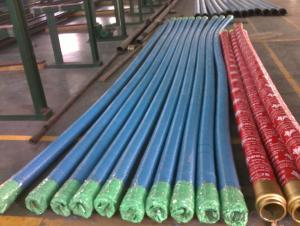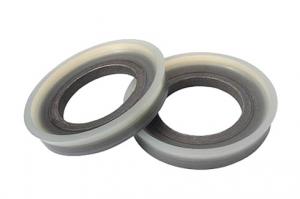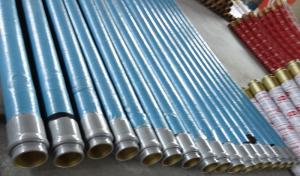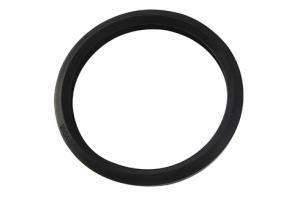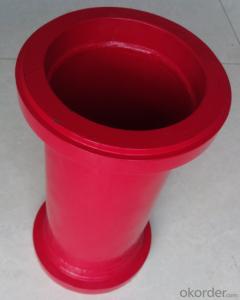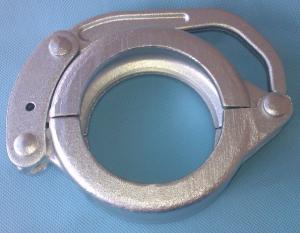Twin Layer Pump Reducing Pipe with High Quality
- Loading Port:
- Tianjin
- Payment Terms:
- TT or LC
- Min Order Qty:
- 10 pc
- Supply Capability:
- 1000 pc/month
OKorder Service Pledge
OKorder Financial Service
You Might Also Like
Product Description:
Product Name: Twin Layer Pump Reducing Pipe
1. Specification
Type | DN | Thickness (mm) | Length (mm) | Weld-on Ends | Weight (kgs) | |
ST52 Steel Pipe | 125 | 4.0 | 3000/ 2000/ 1000 | 148mm | 41 | |
4.5 | 148mm | 46 | ||||
7.0 | 148mm | 72 | ||||
Hardened Pipe | 125 | 4.5 | 148mm Chrome Carbide Insert | 48 | ||
7.0 | 148mm Chrome Carbide Insert | 76 | ||||
Twin-Wall Pipe | 125 | 2+2 | 148mm Chrome Carbide Insert | 45 | ||
2.5+2 | 148mm Chrome Carbide Insert | 48 | ||||
4.5+3 | 148mm Chrome Carbide Insert | 76 | ||||
ZX-Pipe(ST52) | 125 | 7.0 | ZX-5" F/M flanges | |||
Hardened ZX-Pipe | 125 | 7.0 | ZX-5" F/M flanges | |||
Schwing F/M Pipe (ST52 ) | 125 | 4.0 | Schwing 5" F/M flanges | |||
4.5 | Schwing 5" F/M flanges | |||||
7.0 | Schwing 5" F/M flanges | |||||
8.0 | Schwing special F/M flanges | |||||
Steel Pipe | 100 | 4.5 | 3000 | 122mm/127mm/4"HD | ||
4.5 | 2000 | 122mm/127mm/4"HD | ||||
4.5 | 1000 | 122mm/127mm/4"HD | ||||
150 | 8.0 | 6000 | 6"HD/ ZX-6" F/M | |||
8.0 | 3000 | 6"HD/ ZX-6" F/M | ||||
8.0 | 1500 | 6"HD/ ZX-6" F/M | ||||
8.0 | 1000 | 6"HD/ ZX-6" F/M |
2. Application
Concrete delivery.
3. Package
Put into containers.
FAQ:
Q1: Why buy Materials & Equipment from OKorder.com?
A1: All products have its ISO certifications, adheres to the highest standards and a commitment to supply chain safety and customer satisfaction.
Q2: How do we guarantee the quality of our products?
A2: We have established an advanced quality management system which conducts strict quality tests at every step, from raw materials to the final product. At the same time, we provide extensive follow-up service assurances as required.
Q3: How soon can we receive the product after purchase?
A3: Within three days of placing an order, we will begin production. The specific shipping date is dependent upon international and government factors, but is typically 10 to 30 workdays.
Q4: If we can produce Twin Layer Pump Reducing Pipe according to customers request?
A4: Yes, we can produce Twin Layer Pump Reducing Pipe according to the difference country situations to make it suitable to the market and customers. We have very professional technical team to make the design.
Q5: How to make a quick resolution for after service?
A5: We have overseas branches all-around of world, If needed, the seller shall dispatch 2 engineers to the buyer's site for supervision of training. The buyer shall make available of necessary facilities &skilled personnel at site for training.
Images:
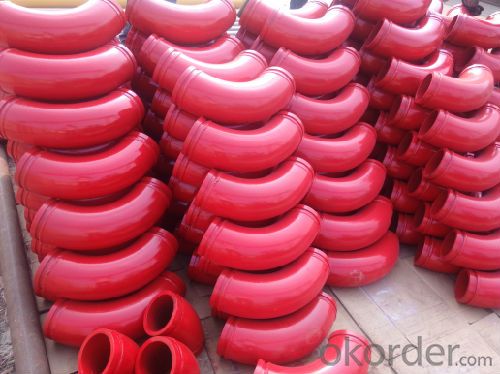
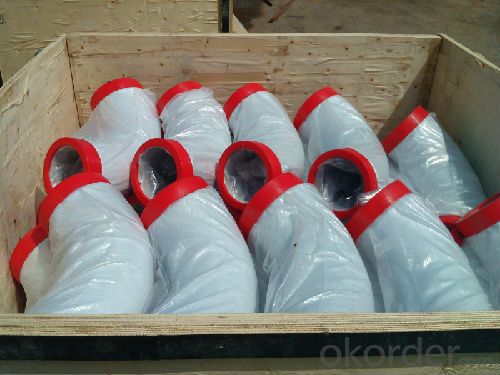
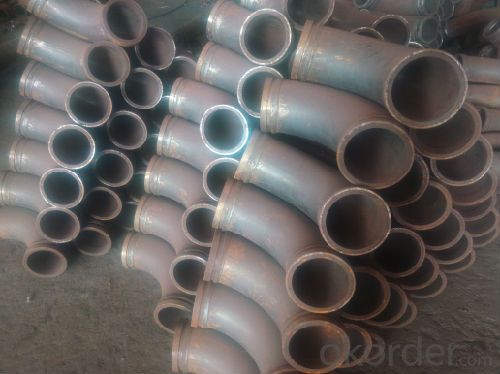
- Q: Are there any specific training or certifications required for handling and installing concrete pump spare parts?
- Yes, specific training and certifications are required for handling and installing concrete pump spare parts. Individuals working in this field usually undergo specialized training programs to gain a comprehensive understanding of the equipment, safety protocols, and proper installation techniques. Additionally, some manufacturers or organizations may offer certifications to ensure that professionals have met certain industry standards and possess the necessary skills to handle and install concrete pump spare parts effectively and safely.
- Q: What are the different types of concrete pump hopper pins?
- There are several types of concrete pump hopper pins, including snap pins, lynch pins, and clevis pins. These pins are used to secure the hopper to the pump and ensure it stays in place during operation.
- Q: Can concrete pump spare parts be inspected or certified by third-party organizations?
- Yes, concrete pump spare parts can be inspected and certified by third-party organizations. These organizations have the expertise and knowledge to evaluate the quality, performance, and safety of the spare parts. By obtaining certification from these trustworthy third-party organizations, customers can have confidence in the reliability and durability of the concrete pump spare parts.
- Q: How often should concrete pump pressure gauges be inspected and replaced?
- Concrete pump pressure gauges should be inspected regularly to ensure their accuracy and functionality. The frequency of inspection and replacement may vary depending on the specific conditions and usage of the concrete pump. However, as a general guideline, it is recommended to inspect and replace pressure gauges at least once a year or after every 500 pumping hours, whichever comes first. This regular inspection and replacement schedule helps to avoid any potential inaccuracies or malfunctions that could compromise the safety and efficiency of the concrete pumping operations. Additionally, it is important to follow the manufacturer's recommendations and guidelines for pressure gauge maintenance and replacement to ensure optimal performance and longevity.
- Q: What are the common signs of wear and tear on concrete pump spare parts?
- The specific signs of wear and tear on concrete pump spare parts can vary depending on the part in question. However, there are general indications that suggest when a concrete pump spare part is experiencing wear and tear. One indication is the presence of visible damage or deterioration on the surface of the part. This may manifest as cracks, chips, or dents on the outer layer of the spare part. These damages can occur due to regular usage, exposure to harsh environmental conditions, or accidental impact during operation. Another sign is an increase in vibration or noise during operation. If a concrete pump spare part is undergoing wear and tear, it may generate unusual vibrations or noises that were not evident when it was in good condition. This can signify internal damage or misalignment of the part, which can impact its overall performance and efficiency. Diminished performance or efficiency is also a common signal of wear and tear on concrete pump spare parts. If a part is experiencing wear and tear, it may not operate as efficiently as before, resulting in reduced pumping capacity, decreased flow rate, or inefficient operation. This can cause delays in construction projects and increased maintenance costs. Furthermore, an escalation in maintenance and repair requirements can indicate wear and tear on concrete pump spare parts. If a part needs more frequent repairs or replacements than usual, it may suggest that it is undergoing wear and tear. Regular inspections and maintenance can aid in early identification of potential issues and prevent further damage to the spare parts. In conclusion, signs of wear and tear on concrete pump spare parts can include visible damage, heightened vibration or noise during operation, diminished performance or efficiency, and increased maintenance demands. It is crucial to regularly inspect and maintain these spare parts to ensure optimal performance and prolong their lifespan.
- Q: What is the purpose of a concrete pump hydraulic accumulator bladder?
- The purpose of a concrete pump hydraulic accumulator bladder is to store and release hydraulic energy, resulting in smoother and more efficient operation of the concrete pump.
- Q: How long does it take to receive concrete pump spare parts after ordering?
- The time it takes to receive concrete pump spare parts after ordering can vary depending on various factors such as the supplier's location, shipping method chosen, and availability of the specific parts. It is recommended to contact the supplier directly for an estimated delivery timeline.
- Q: How long do rubber pistons typically last in a concrete pump?
- The durability of rubber pistons in a concrete pump can differ based on various factors, including the rubber quality, frequency of use, concrete type, and maintenance practices. On average, rubber pistons in a concrete pump typically endure for approximately 500 to 1,500 hours of operation. Nevertheless, certain top-notch rubber pistons have been reported to last even longer when given appropriate care and maintenance. To prolong the lifespan of rubber pistons in a concrete pump, it is essential to regularly inspect, lubricate, and replace worn-out components. It is worth noting that these estimations serve as general guidelines, and the actual lifespan may vary in specific instances.
- Q: Do concrete pump spare parts come with a warranty?
- Certainly, a warranty is provided for concrete pump spare parts. The duration of the warranty may differ depending on the manufacturer and the specific part being acquired. Typically, well-established manufacturers and suppliers offer warranties on their spare parts to instill confidence in customers regarding the product's quality and dependability. It is crucial to thoroughly examine the warranty's terms and conditions to comprehend the coverage and duration. Should any flaws or complications arise within the warranty period, customers can usually obtain a replacement or have the part repaired without incurring any additional expenses.
- Q: What are the common causes of overheating in concrete pump spare parts?
- There are several common causes of overheating in concrete pump spare parts. One of the main reasons is improper lubrication. If the moving parts of the pump, such as bearings and pistons, are not properly lubricated, there is increased friction which leads to overheating. It is important to regularly check and maintain the lubrication system to ensure smooth operation and prevent overheating. Another common cause is excessive use or continuous operation without breaks. Concrete pumps are designed to handle a certain workload, and if they are used beyond their capacity or without proper rest periods, the components can overheat. It is crucial to follow the recommended operating guidelines and allow the pump to cool down periodically to prevent overheating. Furthermore, clogged or blocked cooling systems can also contribute to overheating. The cooling system in a concrete pump helps regulate the temperature by circulating coolant around the engine and other important parts. If the cooling system becomes clogged with debris or the coolant level is low, the pump may overheat. Regularly inspecting and cleaning the cooling system, as well as maintaining the appropriate coolant levels, can prevent overheating. Inadequate ventilation is another common cause of overheating. Concrete pumps generate a significant amount of heat during operation, and if the surrounding environment does not allow for proper airflow, the heat cannot dissipate effectively. This can lead to overheating of the spare parts. Ensuring that the pump is operated in well-ventilated areas or using additional cooling measures, such as fans or air conditioning, can help prevent overheating. Lastly, a malfunctioning or damaged pump component can also cause overheating. If a part of the pump, such as the motor or the hydraulic system, is not functioning correctly, it can put additional strain on other components, leading to overheating. Regular maintenance and inspection of the pump's components can help identify and address any potential issues before they cause overheating. Overall, proper lubrication, following operating guidelines, maintaining cooling systems, ensuring adequate ventilation, and regular maintenance are crucial in preventing overheating in concrete pump spare parts.
Send your message to us
Twin Layer Pump Reducing Pipe with High Quality
- Loading Port:
- Tianjin
- Payment Terms:
- TT or LC
- Min Order Qty:
- 10 pc
- Supply Capability:
- 1000 pc/month
OKorder Service Pledge
OKorder Financial Service
Similar products
Hot products
Hot Searches
Related keywords
